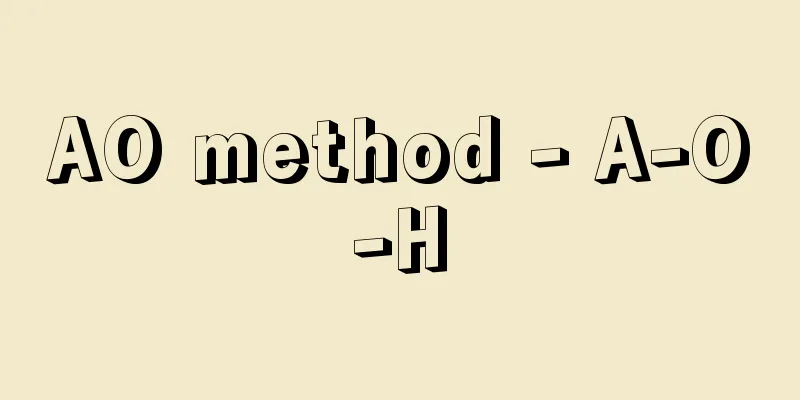Lunar eclipse

|
The phenomenon in which the Moon enters the Earth's shadow cast by the Sun, causing part or all of the Moon's surface to appear missing. principleA lunar eclipse occurs when the moon is on the opposite side of the sun as seen from the earth, so it always occurs when there is a full moon, but not every full moon. The moon's orbital plane is tilted about 5 degrees to the earth's orbital plane (the ecliptic), so a lunar eclipse only occurs when the moon is full near the intersection of these two orbital planes. When the sun goes around the celestial sphere once a year as seen from the earth, it passes through this intersection twice, and at these times both solar and lunar eclipses are likely to occur, and this season is called the "eclipse season." Eclipse seasons sometimes occur six months apart, for example in March and September, and then gradually move to February and August, January and July, and so on, before returning to the original position in 18.6 years. In one eclipse season, there is usually one solar eclipse and one lunar eclipse, but there are rare cases where there are two solar eclipses or no lunar eclipses at all. Over a long period of time, there are more solar eclipses than lunar eclipses that occur on Earth, but because solar eclipses are visible from a smaller area, there are more lunar eclipses visible from a given location than solar eclipses. [Naoyuki Sekiguchi] How to see a lunar eclipseWhen the Moon only enters the Earth's penumbra and not the umbra, the change is barely noticeable to the naked eye from Earth, so in the astronomical calendar, only when at least part of the Moon enters the Earth's umbra is called a lunar eclipse. A lunar eclipse in which the entire Moon enters the Earth's umbra is called a total eclipse, and a lunar eclipse in which only part of the Moon enters the umbra is called a partial eclipse. In the astronomical calendar, the radius of the Earth's umbra is set to be 2% larger than the umbra calculated using the Earth's actual radius. Total eclipses occur about twice as often over a long period of time as partial eclipses. Even during a total eclipse, the Moon rarely disappears completely, and appears to shine copper-red. However, in rare cases, it can become so dark that it is almost invisible. The celestial almanac records the time, direction, etc. of the following lunar eclipse phenomena: (1) the beginning of the penumbral eclipse, (2) the beginning of the waning (shoki), (3) the beginning of the total eclipse (shokuki), (4) the maximum of the eclipse (shokujin, when the center of the Moon is closest to the center of the Earth's shadow), (5) the end of the total eclipse (seiko), (6) the end of the waning (return of the full moon), and (7) the end of the penumbral eclipse. In the case of a partial eclipse, there is no beginning or end of the total eclipse. The times at which the phenomena (1) to (7) occur are the same for the entire Earth, which is different from a solar eclipse. [Naoyuki Sekiguchi] Changes on the MoonDuring a lunar eclipse, the sun's rays are blocked and the surface of the moon cools rapidly, so changes in the surface temperature of the moon are observed using infrared, millimeter waves, centimeter waves, etc. It is thought that as the wavelength of the radio waves observed becomes longer, it represents the temperature from the part of the moon that goes deeper inside, and by observing this change, it is possible to estimate the thermal conductivity of the surface layer of the moon. In addition, as the moon becomes darker, it is possible to observe occultations of faint stars (stars with lower luminosity than other stars) (the phenomenon in which a star is hidden behind the moon, also known as occultation). There are many faint stars, and their positions can be measured precisely, so they can be useful in precise measurements of the position and movement of the moon. [Naoyuki Sekiguchi] Humans and the Lunar EclipseFrom ancient records of lunar eclipses, we can study the movements of the moon and the sun over many years. The Earth's shadow on the surface of the moon during a lunar eclipse has a vague border and cannot be observed accurately, but it can be observed simultaneously over a wide area on Earth, so by comparing ancient records of lunar eclipses made independently in the East and West, we can verify the reliability of the records, which can serve as material for calendars and chronology and can be more useful than records of solar eclipses. It seems that people living in ancient Britain (the British Isles) had a belief that it was necessary to predict the occurrence of a lunar eclipse on the winter solstice (a belief that was deeply connected to the lunar eclipse that occurs on the winter solstice), and the megalithic structure known as Stonehenge on Salisbury Plain, whose construction began around 1900 BC, has a structure that can predict the winter solstice lunar eclipse. [Naoyuki Sekiguchi] [Reference items] | | |A total lunar eclipse was observed from 20:48 to 0:11 on January 31, 2018 (Heisei 30). The photos capture the lunar eclipse from the beginning of the partial eclipse to the total eclipse, showing the progression of the lunar eclipse from left to right in the top row, then to the middle and bottom rows. During a total eclipse, the moon appears copper-colored due to the refraction that occurs when sunlight passes through the Earth's atmosphere. [Top row] 20:32→20:54→21:05 [Middle row] 21:16→21:27→21:38 [Bottom row] 21:49→22:00→22:35 Photographed in Nerima Ward, Tokyo © Hiroshi Aizawa "> Total lunar eclipse Source: Shogakukan Encyclopedia Nipponica About Encyclopedia Nipponica Information | Legend |
|
太陽によってできる地球の影の中に、月が入って月面の一部または全部が欠けて見える現象。 原理月食は、月が地球から見て太陽の反対側にきたときにおこるから、かならず満月のときにおこるが、満月のときにかならず月食がおこるわけではない。月の軌道面は地球の軌道面(黄道)に対して約5度傾いているため、月がこの二つの軌道面の交わる方向に近い位置で満月になったときにのみ月食がおこる。太陽が、地球から見て1年で天球を1回りするとき、この交点を2回通過するが、このときに日食も月食もおこりやすく、この季節を「食の季節eclipse season」という。食の季節は、たとえばあるときには3月と9月というように、半年隔てておこり、これがしだいに2月と8月、1月と7月というように移動し、18.6年で元に戻る。1回の食の季節には、普通1回の日食と1回の月食がおこるが、まれには2回の日食がおこる場合と、1回も月食がおこらない場合とがある。長い期間を通じては、地球全体では日食のほうが月食より数多くおこるが、日食は見える地域が狭いので一地点から見える月食の数は日食の数より多い。 [関口直甫] 月食の見え方地球の半影にのみ月が入って、本影の中に入らない場合には、月は地球から見て肉眼でほとんど変化がわからないので、天体暦上では月の少なくとも一部が地球本影の中に入った場合のみを月食といっている。地球の本影に月の全面が入る月食を皆既食といい、一部のみが本影に入る月食を部分食という。ここでいう地球の本影とは、天体暦においては、地球の実半径を使って計算した本影より2%だけ大きい半径をもって、地球の本影半径とするという決まりになっている。皆既食になる回数は、部分食のみで終わる場合よりも、長い期間で見るとだいたい2倍ぐらい多い。皆既食になっても月がまったく見えなくなることは少なく、赤銅色に光って見える。しかしまれには非常に暗くてほとんど見えなくなることもある。 天体暦には月食の次の諸現象について、時刻、方向角などが記載される。(1)半影食の始め、(2)欠け始め(初虧(しょき))、(3)皆既の始め(食既(しょくき))、(4)食の最大(食甚(しょくじん)。月の中心が地球の影の中心にもっとも近づくこと)、(5)皆既の終わり(生光(せいこう))、(6)欠け終わり(復円)、(7)半影食の終わり、である。部分食の場合は皆既の始めと終わりがない。前記の(1)から(7)までの現象のおこる時刻は地球全体について共通な時刻であり、これは日食と異なる点である。 [関口直甫] 月面上の変化月食のときには、太陽光線が遮られて月面が急激に冷却するので、そのときの月の表面温度変化を、赤外線、ミリ波、センチ波などで観測をする。観測する電波の波長が長くなるにつれて、月の表面より内部へ入った部分からの温度を表すものと考えられ、この変化を観測することにより、月の表面層の熱伝導率の推定ができる。また月の明るさが暗くなるので、微光星(他の星に比べて光度が低い星)の星食(星が月の後ろに隠される現象。掩蔽(えんぺい)ともいう)の観測ができる。微光星は数が多く、また位置を精確に測定できるので、月の位置、運動の精密な測定に役だたせることができる。 [関口直甫] 人間と月食月食の古い時代の記録から、月や太陽の長年月の間の運動の研究ができる。月食のときの月面上に映る地球の影は、境界がぼんやりして精度よく観測はできないが、地球上の広い範囲の地域で同時に観測ができるので、東洋と西洋とで独立になされた月食の古記録を比較することによって、記録の信頼性を検証することができ、暦学、年代学上の資料となり、日食の記録よりも有益である場合がある。 古代のイギリス(ブリテン島)に住んでいた人々は、冬至の日に月食がおこることを予言する必要がある信仰をもっていたらしく(冬至の日におこる月食と深いかかわりのある信仰をもっていたらしく)、紀元前1900年ごろに建設が始まったソールズベリー平原のストーンヘンジという巨石の建造物は、冬至の月食も予言できる構造をもっている。 [関口直甫] [参照項目] | | |2018年(平成30)1月31日、20時48分から0時11分に観測された皆既月食。写真は、部分食の開始から皆既食までをとらえたもので、上段左から右へ、さらに中段、下段へと月食が進行していくようすを示す。皆既食時の月は、太陽光が地球の大気を通る際に起きる屈折の影響で赤銅色に見える。〔上段〕 20:32→20:54→21:05〔中段〕 21:16→21:27→21:38〔下段〕 21:49→22:00→22:35東京都練馬区にて撮影©相澤 弘"> 皆既月食 出典 小学館 日本大百科全書(ニッポニカ)日本大百科全書(ニッポニカ)について 情報 | 凡例 |
Recommend
Hemacandra - Hemacandra (English spelling)
Indian Jain religious poet and scholar. Born into...
Alcove (English spelling)
An architectural term. A recess in the wall of a r...
Kircher, Athanasius
Born: 1601/1602.5.2. Gaisa Died November 27, 1680....
Kuhn Loeb Group
In 1867, German Jews S. Kuhn and A. Loeb founded K...
Elder - Shukuro
〘noun〙① An elderly person who is very experienced ...
Prinzip der freien Beweiswürdigung
…(1) The principle that when determining facts in...
Hidenobu Oda
Year of death: May 8, 1605 (June 24, 1605) Year of...
Guangdong - Canton
A province in southern China. Its capital is Guang...
Vil'kitsky Strait (English: Пролив Вилькицкого/Proliv Vil'kitskogo)
A strait in the central-northern part of the Russ...
Shiitake mushrooms - Shiitake mushrooms
A Tricholomataceae mushroom that grows on the trun...
Hachimonjiya Hachizaemon - Hachimonjiya Hachizaemon
? - 1745 (Enkyo 2) A Kyoto bookshop in the mid-Edo...
Prices (of commodities)
It is the average price of various goods and serv...
Aguascalientes (English spelling)
The capital of Aguascalientes State in central Mex...
Plasma derivative
…Whole blood collected using an anticoagulant can...
Le Corbusier
1887‐1965 Born in Switzerland, he was a French arc...





![Gohoku [village] - Gohoku](/upload/images/67cb9a57e47ea.webp)



